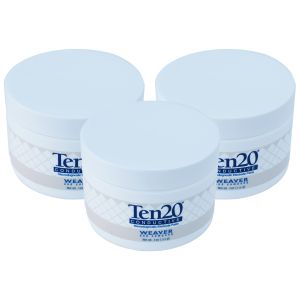We use cookies to make your experience better. To comply with the new e-Privacy directive, we need to ask for your consent to set the cookies. Learn more.
Biofeedback Basics - Biograph Infiniti Training Screens
- Great intro for professionals starting biofeedback
- Based on AAPB published book 'Biofeedback Mastery'
- By biofeedback expert Erik Peper PhD
- For ProComp Infiniti, FlexComp
Biofeedback Basics training screen were created for psychologists and other health professionals starting to use the BioGraph Infiniti software the basic screens in this suite provide health professionals with the displays they need for respiration, temperature, skin conductance, heart rate and muscle biofeedback.
Practitioners that use the ProComp Infiniti or Legacy hardware and BioGraph Infiniti Software version 4.0.1 and higher can use this software
Works with:
- Procomp Infiniti 8 Channel
- Flexcomp in Procomp Infiniti mode (dip switch settings changed)
Display Screens
The display screens in Unit 1, focus upon surface electromyography or SEMG. They show both 1 and 2 channels of electromyography, for learning relaxation and stress control, helping teach awareness of head, neck and low back muscle tension, or training voluntary relaxation of specific muscle groups. They provide the ideal feedback for laboratory practices help students learn how to:
(1) attach, adjust, and calibrate the sensors/equipment; (2) adjust the software signal range and display screens; (3) explore artifacts and quantify/store the data and; (4) practice new skills for use during initial training procedures.
The display screens in Unit 2 are for temperature measurement and biofeedback. They help to train for increasing peripheral temperature and controlling unconscious stress responses. Used to conduct the laboratory practices in the Biofeedback Mastery book, the screens in this unit also allow the students to incorporate the SEMG signal learned in Unit 1.
Skin Conductance is the subject of Unit 3 that provides detailed instructions on this measure that can help develop an awareness of learned stress responses and teach basic self-regulation skills. The screens combined with the manual teach how to use skin conductance or EDR biofeedback through practical skill training and discovery. The screens in this unit start to combine the signals of the first three units; SEMG, temperature and skin conductance.
Unit 4 provides screens for 1 or 2 channels of respiration, for abdominal and (optionally) thoracic breathing training. These screens help demonstrate how slow, deep abdominal breathing helps with relaxation and can be used for lowering the heart rate. Once the basic monitoring of biological signals is mastered, the laboratory exercises include multi-channel recording for assessment and training.
Unit 5 covers EKG and BVP. The HR/BVP sensor is a blood volume pulse detection sensor (otherwise known as a PPG sensor) housed in a small finger worn package, to measure heart rate and provide BVP amplitude, BVP waveform, HR and heart rate variability feedback. The screens in this unit guide the use of the Infiniti system to measure and provide feedback on the cardiovascular system and respiration. The measures taken are EKG and photoplethysmography. Section 5 of the Biofeedback Mastery provides an introduction to the subject and gives specific details on blood volume pulse, blood volume amplitude, heart rate variability (HRV).
Unit 6 provides an introduction to the use of electroencephalography EEG also known as “Neurofeedbackâ€. It puts into practice the The Biofeedback Mastery book is detailed instructions biofeedback tutor and articles then puts into practice the Introduction, Phsyiological Basis of EEG signal, applications and reasons and conclusions.
There are 3 labs in this unit, Lab 1 introduction to EEG equipment, training with Alpha Frequency and training and home practice with Theta frequency.
Unit 7 demonstrates all of the signals, SEMG, temperature, skin conductance, respiration, heart rate and EEG also called modalities and a Stress Assessment. This unit puts together all of the elements covered in the previous units on how biofeedback is used for assessment and voluntary training to understand mind/body interactions and to optimize health. The screens offer a set of visual displays that can form the foundation for biofeedback practices, not only for professionals and their clients, but also for educators and individuals.
Unit 8 allows the user to start building their own screens from a template. They can then add to what they have learnt in the other 7 Units and practice some of the powerful features in the Biograph Infiniti Software Developer Tools.





